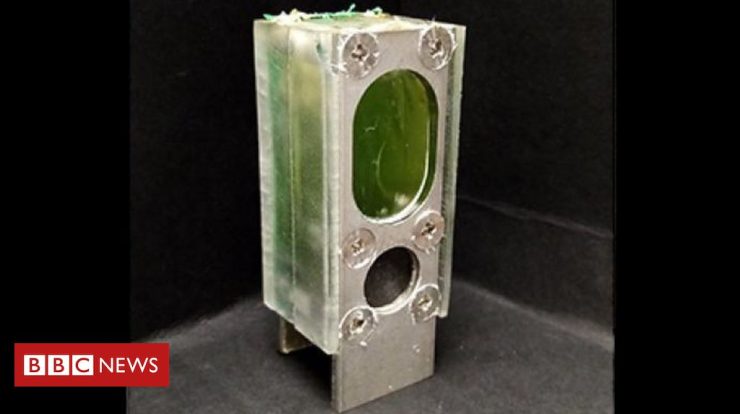

credit, Cambridge University
Algae collect energy from the sun through the process of photosynthesis that generates an electric current
Scientists at the University of Cambridge in England used algae to keep a computer running continuously for a year.
According to the foundation, the system was similar in size to an AA battery and contained a non-toxic species of blue-green algae called synechocystis.
The university said the algae “naturally harvest energy from the sun through photosynthesis”.
The researchers believe the system “has potential as a reliable and renewable way to power small devices.”
They said the system is made from “common, cheap, and widely recyclable materials”.
“This means that it can easily be replicated hundreds of thousands of times to power a large number of small devices as part of the Internet of Things,” they said.
The Internet of Things is a vast and growing network of electronic devices that use a small amount of energy that collect and share data in real time over the Internet, such as smart watches.
The electrical current produced by photosynthesis reacts with an aluminum electrode used to power the microprocessor.
“Our photosynthetic apparatus does not operate like a battery because it constantly uses light as an energy source,” said Professor Christopher Howe, from the University of Cambridge’s Department of Biochemistry.
In the experiment, the device was used to power the Arm Cortex M0+, a microprocessor widely used in IoT devices.
Arm, a Cambridge-based microprocessor design company, collaborated with Cambridge researchers on the project.
“We were impressed by how well the system worked over a long period of time – we thought it might stop after a few weeks, but it did,” said Paolo Bombelli, also from the University of Cambridge’s Department of Biochemistry.
Have you seen our new videos on Youtube? Subscribe to our channel!
